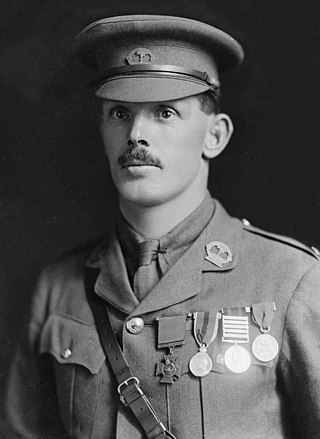
William James Hardham, VC was a New Zealand soldier who was a recipient of the Victoria Cross, the highest award for gallantry "in the face of the enemy" that could be awarded at the time to military personnel of the British Empire.
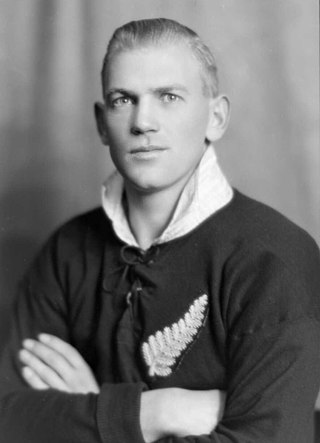
Eric William Thomas Tindill was a New Zealand sportsman. Tindill held a number of unique records: he was the oldest ever Test cricketer at the time of his death, the only person to play Tests for New Zealand in both cricket and rugby union, and the only person ever to play Tests in both sports, referee a rugby union Test, and umpire a cricket Test: a unique "double-double".

Robert Charles Stuart was a New Zealand rugby union player and administrator. He was given a lifetime service award by the International Rugby Board immediately after the 2003 Rugby World Cup.
The following lists events that happened during 1914 in New Zealand.
The following lists events that happened during 1916 in New Zealand.
The following lists events that happened during 1924 in New Zealand.

Andrew Keith Hore is a former New Zealand rugby union player. He played for the All Blacks between 2002 and 2013. His position was hooker. He notably played for the Hurricanes in Super Rugby, but also represented the Highlanders and the Crusaders. When available, he played for Taranaki in the ITM Cup, now known as the Mitre 10 Cup. Hore retired from international rugby after playing Ireland during the 2013 All Black Northern Hemisphere tour, with a total of 83 test caps to his name. In 2008 Hore received the Kelvin Tremain Trophy for Rugby player of the year. In 2011, Andrew Hore captained the All Blacks against Canada.
Charles Kesteven Saxton was a New Zealand rugby union and cricket player, coach and administrator.

John McGlashan College is a state integrated boarding and day school for boys, located in the suburb of Maori Hill in Dunedin, New Zealand. The school currently caters for 532 students from years 7 to 13, including 120 boarders and up to 30 international students.

Vincent David Bevan was a New Zealand rugby union player.
Liam James Coltman is a New Zealand rugby union player who plays as a hooker for Lyon in Frances's domestic competition Top 14.
Henry James Atkinson was a New Zealand rugby union player. A lock, Atkinson represented West Coast and Otago at a provincial level, and was a member of the New Zealand national side, the All Blacks, in 1913. He played 10 matches for the All Blacks including one international.
George Arthur Hardy Bullock-Douglas was a New Zealand rugby union player. A wing three-quarter, Bullock-Douglas represented Whanganui at a provincial level, and was a member of the New Zealand national side, the All Blacks, from 1932 to 1934. He played 15 matches for the All Blacks including five internationals.
John Victor Macky was a New Zealand rugby union player.
Neville Henry Thornton was a New Zealand rugby union player. A number eight, Thornton represented King Country and Auckland at a provincial level, and was a member of the New Zealand national side, the All Blacks, in 1947 and 1949. He played 19 matches for the All Blacks including three internationals.

Ronald Leslie Dobson was a New Zealand rugby union player. A second five-eighth, Dobson represented Auckland at a provincial level. He played one match for the New Zealand national side, the All Blacks, a test against the touring Australian team in 1949.
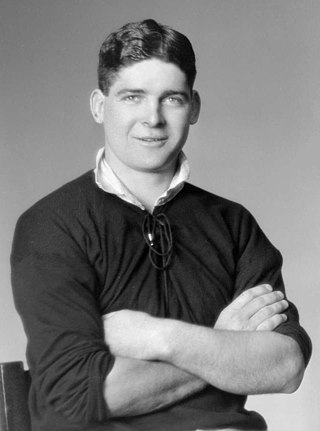
Jack Finlay was a New Zealand rugby union player. A versatile player, Finlay turned out in the forwards for his club but usually as a first or second five eighth at provincial level for Manawatu. He played just one match for the New Zealand national side, the All Blacks, as a Number 8 in the first test against the touring Australian team at Carisbrook in 1946, in which he scored a try.
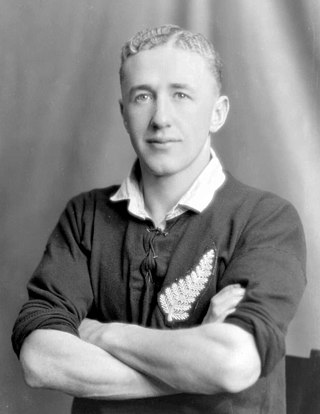
Jack Lester Griffiths was a New Zealand rugby union player. A utility back who played in every backline position except on the wing, Griffiths represented Wellington at a provincial level, and was a member of the New Zealand national side, the All Blacks, from 1934 to 1938. He played 30 matches for the All Blacks—three of which were as captain—including seven internationals. In all he scored 50 points for the All Blacks, but none in Test matches.
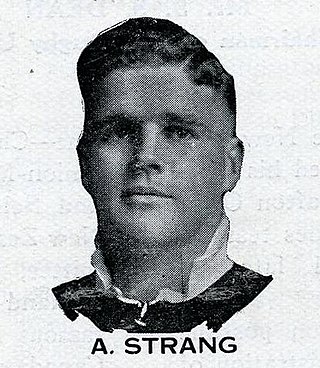
William Archibald Strang was a New Zealand rugby union player. A first five-eighth and halfback, Strang represented South Canterbury at a provincial level, and was a member of the New Zealand national side, the All Blacks, from 1928 to 1931. He played 17 matches for the All Blacks including five internationals, and captained the side in his final Test match, against Australia in 1931.











